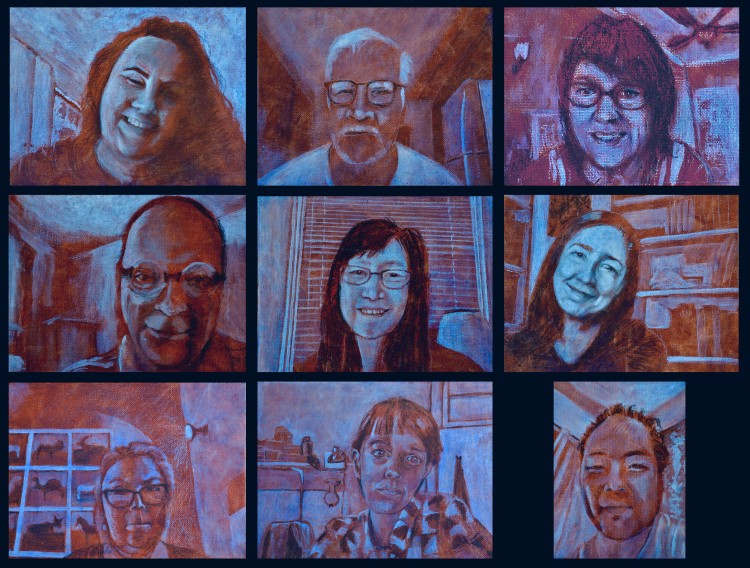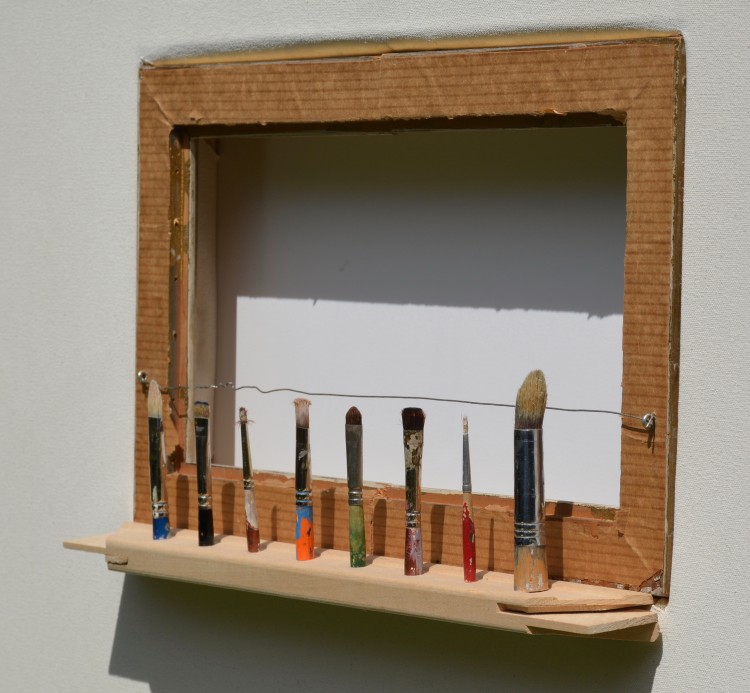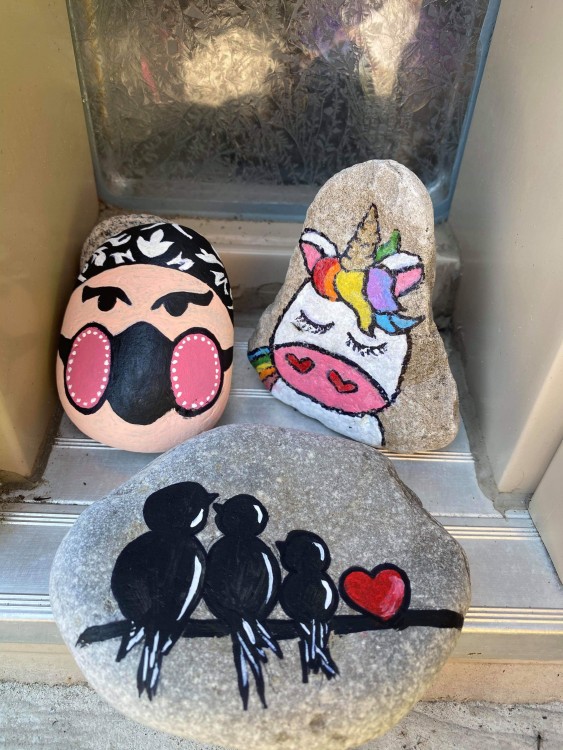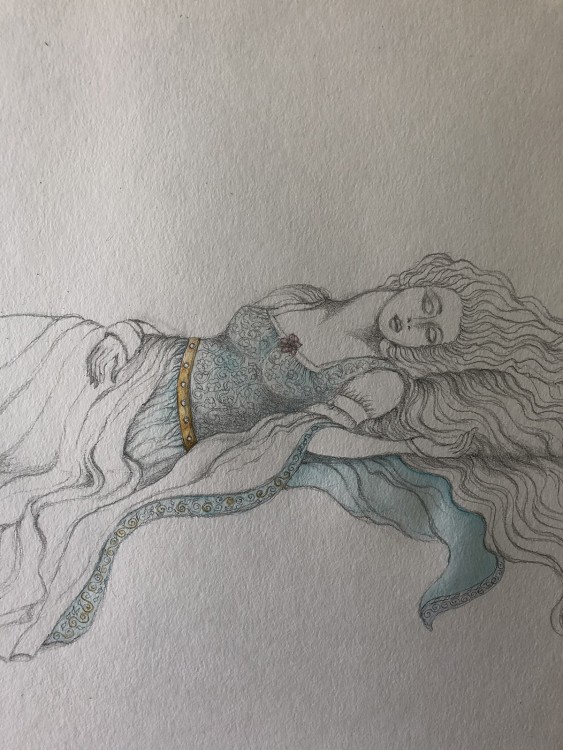Art in the time of COVID
AGO's Anne Tanenbaum Gallery School Art Educator Doris Purchase discusses the role of the AGO and artists during times of crisis and creates some engaging and contemplative artworks in response.
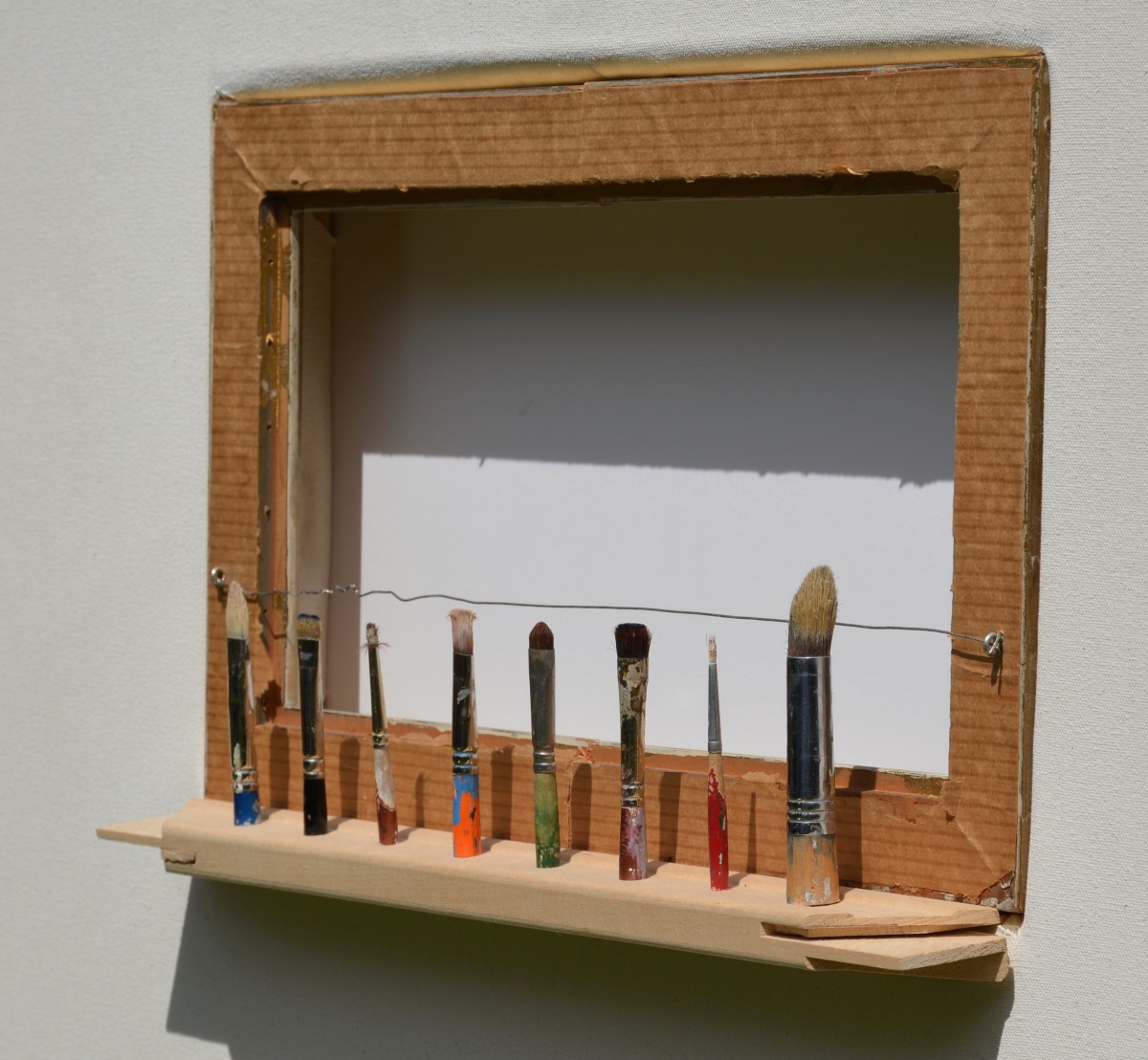
By Doris Purchase
Doris works as an art teacher in Public Programming & Learning at the AGO.
Art in the time of COVID-19 has been a period of serious reflection for me.
As society shut down, it was divided into essential and non-essential spheres. The AGO and we artists found ourselves defined as the latter. However over the last few months, I have realized that we are critical to society’s healthy functioning because we create and set up visual conversations.
I have been inspired to undertake three projects:
BLUE ZOOM
Many things were left unfinished as of March 13, 2020 when lockdown began. Blue Zoom is a series of interrupted paintings, paintings in limbo, frozen in their blue glaze phase, never to be finished. At the time, they were symbolic of so many things left unfinished and postponed, especially our Picasso exhibit which is focussed on his blue phase.
It is also inspired by the technology which has united us and allowed us to keep conversing but which also suffered from interruptions: awkward silences, microphones that dropped audio, cameras which didn’t work.
These are the faces of some of my AGO Zoom group # 14 – we would gather electronically to learn more about each other and to make deeper connections. I decided to share the paintings with them – via Zoom – on the Friday before what would have been the opening of Picasso: Painting the Blue Period.
COVID SHELF PIECE
During this pandemic, life and death decisions are being made in hospitals and senior care homes. I spent much time thinking about hospital and health personnel who find themselves making difficult decisions about who might receive treatment, who might survive, who might be confined for months in a little room.
This sad fact upset me and lead me to begin thinking about how members of our society are sometimes neglected. Many older people find themselves on the outer edges, forcibly isolated and sometimes forgotten.
I thought of our older citizens as I looked at the paint brushes, dried up and neglected in my studio. I had neglected my brushes, I had deemed them useless because they had outlived their lives. I could have prolonged their lives by caring for them and cleaning them with diligence, but did not because it was the end of a long painting session and it was simply too much work. Besides, they were relatively cheap and replaceable.
COVID Shelf Piece is my homage to their central importance of brushes to the practice of artists. I wanted to display them like our loved ones in frames on a mantelpiece, much as Winsom did in her exhibit at the AGO, I Rise. In COVID Shelf Piece, you look at a brush and see its resilience, its achievements and accomplishments, the moments that you shared.
INFECTED BY ART
While the primary focus of COVID-19 has been the physical effects on people, organizations like ours have also suffered. I created Infected by Art to subvert the dangerous and negative elements of the coronavirus, and to bring the beauty and passion of smaller art galleries directly into the lives of people who may not otherwise venture into the world of art.
Infected by Art combines a pared-down graphic of the SARS-CoV-2 virus with a QR code reader. From a safe (two metre) distance, people use their cellphones to read the code in the graphic, and are directed to (or “infected” by) the website of an art gallery. Once they are “compromised”, they wander through the art on display and develop a fever for more art, which is fed by more QR codes directing them to other galleries. The individual is infected by art, and the galleries receive the viewers they need to survive at a time when they are struggling to reach the public.
Infected by Art posters have been posted in gallery windows in Toronto and could also be posted elsewhere in the community, safely integrated into the streetscape of our lives: bus shelters, store windows, hydro poles. The graphic can also be photographed and sent by text from one person to another, creating yet another vector of aesthetic infection. It’s taking the best of the spiky SARS-CoV-2 virus and enlisting it in the service of art.


